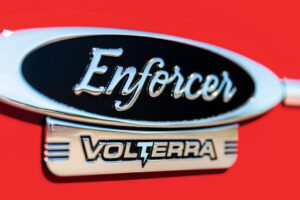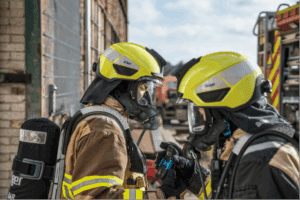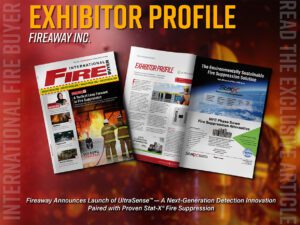British inspection specialist PFE Limited uses FLIR Thermal Studio software to accelerate site inspections and reporting, and to deliver consistent reporting quality to its demanding customer base. Based in Wallasey, North-West England, PFE Limited is a family-owned business, specialising in a wide range of inspection and reliability services for industrial customers.
To provide trustworthy and repeatable reporting quality, PFE engineers make use of the latest technology on the market for vibration analysis, dynamic balancing and thermography, among other things.
The company has been using thermal imaging for more than 15 years for mechanical, electrical, and
process-related inspections. One of the more specialised types of inspections that PFE Limited offers are furnace inspections, for which the company is using a FLIR Exx-Series pistol-grip camera.
Practical, all-in-one inspection tool
The most tangible output that the company is offering to its customers are reports, so it speaks for itself these need to be of consistently high quality. PFE Limited therefore relies on FLIR Thermal Studio software with routing functionality from the FLIR Route Creator plugin. “We used to go on site for our inspections, combining the use of a thermal imaging camera with some kind of clipboard or electronic tablet,” said Jake Ford, Reliability & Mechanical Engineer at PFE. “For every asset and every image taken with our thermal camera, we used to jot down numbers and comments on a separate device. This was not only unpractical, but it also took twice the time we spend on inspections today. Thanks to the introduction of the FLIR Thermal Studio software, we were able to cut our inspection time in half.”
Pre-planned routes
The PFE Limited team especially values the FLIR Route Creator plugin, which allows users to create pre-planned routes in FLIR Thermal Studio for their inspections. Routes can be downloaded to any FLIR thermal camera that has FLIR Inspection Route on-board software, and then run from the camera itself. This means inspectors no longer need to carry two separate items—which is much more practical—helps them stay organised when surveying large or multiple locations, and above all, ensures they don’t miss any assets or inspection areas.
Also, inspection routes are not always linear: PFE engineers do not always follow the same order. They often skip certain assets and need to go back and forth on different moments in time. With a simple clipboard or tablet, the risk of missing assets from inspections is much higher. When Inspection Route is active on the camera, the progress in the pre-planned route is always clearly visible and the software tells the user exactly which assets are left to do. “A typical furnace inspection used to take us about four hours. Now, we can easily complete it in two hours,” said Ford.
To read more exclusive features and latest news please see our February issue here.
Media contact
Rebecca Morpeth Spayne,
Editor, International Fire Buyer
Tel: +44 (0) 1622 823 922
Email: [email protected]




































